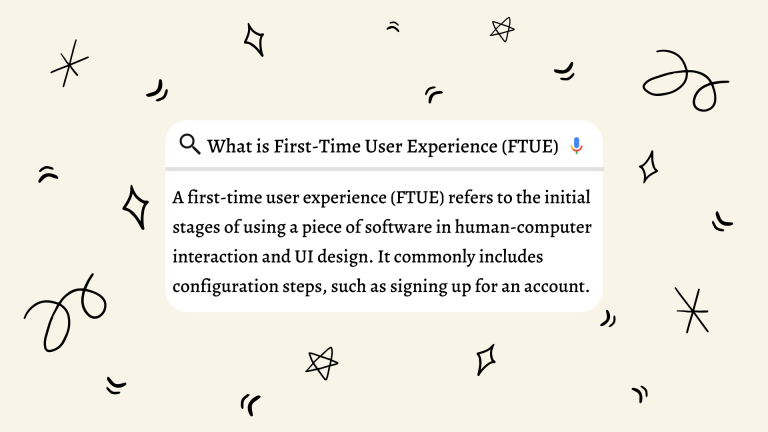And there are people like this…

Now we don’t judge here at AnnounceKit. And we don’t care which group you fall in.
Whether you’re good at coding or not, there are times when no code SaaS tools are the right fit.
- They allow junior front-end developers to push the ball forward
- They allow senior developers to focus on the most critical problems
- And a whole lot more
This guide walks through 14 no code tools for product managers.
Table of Contents
- 7 Advantages of No-Code Tools for SaaS
- Best No Code Tools for SaaS that Every Product Manager Should Try

Quick Setup, Easy to Use, and Many Integrations
Manage your product announcements from a single place and easily distribute them
across multiple channels.
7 Advantages of No-Code Tools for SaaS
- Accelerated Time-to-Market: With no-code SaaS tools, you can rapidly prototype, iterate, and deploy your product without the time-consuming intricacies of traditional coding. This agility enables you to seize market opportunities swiftly and stay ahead of competitors.
- Empowerment of Non-Technical Teams: No-code tools democratize the development process, allowing cross-functional teams to actively contribute to product creation. Designers, marketers, and subject-matter experts can collaborate seamlessly, fostering innovation and diverse perspectives.
- Resource Efficiency: By circumventing the need for specialized developers, your team can optimize resource allocation. This cost-effective approach empowers you to allocate budget and manpower strategically, thereby enhancing your product’s overall value proposition.
- Flexible Iteration and Experimentation: No-code tools facilitate rapid experimentation and adaptation. You can easily test different features, designs, and user experiences, gathering real-time insights from users and fine-tuning your product based on their feedback.
- Reduced Technical Debt: Traditional coding often accumulates technical debt, leading to maintenance challenges and bottlenecks. No-code solutions alleviate this burden, ensuring that your product remains scalable and adaptable as it evolves.
- Seamless Integration and Scalability: No-code SaaS tools often offer integrations with popular platforms and services. This streamlines the process of integrating your product into existing ecosystems and ensures scalability as your user base grows.
- Enhanced Focus on Innovation: By delegating routine coding tasks to no-code tools, your development team can channel their expertise into higher-level strategic tasks and innovation. This shift cultivates a culture of creativity and problem-solving, driving the evolution of your product.
Best No Code Tools for SaaS that Every Product Manager Should Try
1. AnnounceKit
Overview: AnnounceKit is a no-code announcement app that helps companies communicate product updates and news to their customers, increase feature adoption, and build customer trust.
What It Helps With: AnnounceKit helps your product team educate and inform users of new features so that they quickly adopt them.
No-Code Features: Interactive changelog software, release notes tool, and more.
Building a SaaS MVP: AnnounceKit directly integrates with your SaaS MVP and workflow so that you can easily update your changelog, release notes, and embed beautiful widgets right within your app.
2. Webflow
Overview: Webflow is a comprehensive website design and development platform.
What It Helps With: Webflow enables the creation of responsive websites with dynamic content and interactions.
No-Code Features: Intuitive visual design, responsive layouts, animations, CMS functionality.
Building a SaaS MVP: Develop a landing page for your SaaS product, showcase key features, and collect user data through forms without writing a single line of code.
3. Wized
Overview: Wized is an app-building tool that integrates seamlessly with Webflow.
What It Helps With: Wized empowers users to create functional web applications within the Webflow ecosystem.
No-Code Features: Drag-and-drop components, logic and data handling, user authentication.
Building a SaaS MVP: Build a prototype of your SaaS app’s core functionality using Wized’s components and logic, allowing stakeholders to interact with the product’s key features.
4. Bubble
Overview: Bubble is a versatile visual development platform for web and mobile applications.
What It Helps With: Bubble enables the creation of complex web apps with dynamic data and workflows.
No-Code Features: Visual design, database management, API integrations, workflows.
Building a SaaS MVP: Construct a user management system, integrate external APIs for data enrichment, and simulate user journeys to validate your SaaS concept.
5. Carrd
Overview: Carrd is a simple, single-page website builder.
What It Helps With: Carrd is perfect for creating minimalistic landing pages or single-page microsites.
No-Code Features: Pre-designed blocks, customizable layouts, simple forms.
Building a SaaS MVP: Craft a concise landing page that highlights your SaaS solution’s value proposition, features, and captures user interest swiftly.
6. Zapier
Overview: Zapier is an integration platform that connects various apps and automates workflows.
What It Helps With: Zapier automates data transfer and actions between different apps.
No-Code Features: Pre-built integrations, customizable “Zaps” (automations).
Building a SaaS MVP: Integrate your SaaS app with other popular tools and automate workflows, showcasing the app’s potential for seamless integration.
7. Airtable
Overview: Airtable is a powerful no-code database and collaboration platform.
What It Helps With: Airtable enables data organization, tracking, and collaboration.
No-Code Features: Spreadsheet-style interface, customizable views, linking records.
Building a SaaS MVP: Create a database to manage user feedback, feature requests, and bug reports, fostering efficient communication with stakeholders.
8. Unstack
Overview: Unstack is an all-in-one marketing platform.
What It Helps With: Unstack facilitates content creation, email campaigns, and analytics.
No-Code Features: Landing page builder, email editor, analytics dashboard.
Building a SaaS MVP: Design and launch a landing page for your SaaS product, initiate email campaigns, and track user engagement to gauge interest.
9. Adalo
Overview: Adalo is a visual development platform for creating web and mobile apps.
What It Helps With: Adalo empowers users to design interactive and dynamic apps with a focus on user experience.
No-Code Features: Drag-and-drop interface, components library, conditional logic.
Building a SaaS MVP: Craft a user-friendly interface for your SaaS product, design user onboarding experiences, and simulate user interactions to validate your app’s usability.
10. Outseta
Overview: Outseta is an all-in-one platform that combines subscription billing, CRM, and customer support.
What It Helps With: Outseta streamlines business operations related to subscriptions, customer management, and support.
No-Code Features: Subscription billing, CRM tools, help desk functionality.
Building a SaaS MVP: Set up subscription plans, manage customer relationships, and provide support channels within your SaaS app using Outseta’s integrated suite.
11. Thunkable
Overview: Thunkable is a platform for building mobile apps with no coding skills required.
What It Helps With: Thunkable specializes in creating mobile apps for various platforms.
No-Code Features: Drag-and-drop UI components, data storage, integration capabilities.
Building a SaaS MVP: Develop a mobile app version of your SaaS product, enabling users to access your platform on the go and validate your app’s mobile compatibility.
12. Glide
Overview: Glide is a tool to create mobile apps directly from Google Sheets.
What It Helps With: Glide transforms Google Sheets into functional mobile apps with data visualization and interaction.
No-Code Features: Google Sheets integration, customizable layouts, in-app interactions.
Building a SaaS MVP: Transform your Google Sheets data into a user-friendly mobile app interface, providing stakeholders with real-time access to key metrics and insights.
13. AppGyver
Overview: AppGyver is a visual development platform for building web and mobile apps.
What It Helps With: AppGyver offers powerful app-building capabilities with complex logic and data management.
No-Code Features: Drag-and-drop UI, advanced logic flows, integrations.
Building a SaaS MVP: Create a sophisticated app prototype with complex workflows, user authentication, and interactive elements to demonstrate the core functionality of your SaaS product.
14. Makerpad
Overview: Makerpad is a community and platform for learning and building with no-code tools.
What It Helps With: Makerpad provides tutorials, templates, and resources for using various no-code tools effectively.
No-Code Features: Learning resources, templates, community support.
Building a SaaS MVP: Utilize Makerpad to enhance your skills with different no-code tools, learn best practices, and access pre-built templates to expedite your SaaS MVP creation.
Incorporating these additional six no-code SaaS tools into your arsenal will further equip you with the means to innovate, collaborate, and swiftly bring your SaaS product to life.







